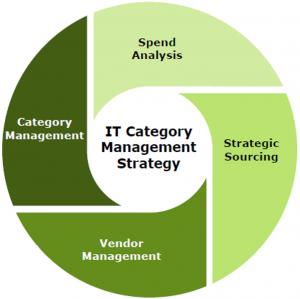IT procurement a key piece of puzzle for Transformation and Innovation Program
New approaches to procurement of Information Technology (IT) are being examined as part of CU’s Transformation and Innovation Program (TIP), which continues to gain ground.
“A CU-wide vision for technology investment requires a systemwide approach to IT Procurement,” said Harper Johnson, Associate Vice President of Transformation and Innovation. “Our effort last year to advance a systemwide approach to Adobe resulted in $1.1 million in projected savings over the four years of the contract.”
The projects within TIP are continuing to solidify the scope of their activities, define deliverables and identify potential timelines and milestones. This body of work will be formally documented into each project’s charter; charters will be reviewed by campus and system leaders to ensure alignment.
Stakeholder interviews are underway primarily with members of the IT Governance Executive Committee and other leaders from across CU.
As the program’s name indicates, the projects that make up the program are transformational in nature. Stakeholders will need to be open to new ways of doing things and to consider the perspectives of others whom they may not have worked with before. The goal is to emerge operationally stronger and more efficient by leveraging technology as a key enabler of CU’s mission.
Why the need for change? The Technology Assessment completed in spring 2020 showed that 45% of CU’s IT spend occurred outside of the Offices of Information Technology, University Information Services, and Advancement IT. There is a significant amount of information technology-related goods and services that are purchased by the individual below $10,000.
Campus/department-level autonomy has been the norm for CU, but we now recognize that we are not effectively leveraging the scale of CU for improved contracts and better pricing.
When analyzing the IT buying patterns of CU holistically, there were many examples of separate contracts and pricing with the same vendor across CU; this duplicative spend means there are efficiencies to be gained.
Purchasing processes currently in place have room for improvement in terms of efficiency, and we lack consistent monitoring and reporting to help make the best decisions we can in terms of sourcing and contracting for IT goods and services.
Goals of the IT Procurement project:
The main goals of the 2.2 Effective and Efficient Procurement of Information Technology project include:
- A stronger, more strategic approach to IT Category Management. This is supported by strategic work underway in the Procurement Services Center, under the direction of Chief Procurement Officer Ed Mills.
“Through engagement with campus customers, the PSC developed a series of initiatives to improve efficiency, visibility, data analytics and product pricing,” Mills said. “We are pleased to continue partnering with our customers and the TIP projects to deliver transformation and innovation in IT investments.”
- Improving our master contract agreement language, templates, and supporting processes to ensure consistent workflow and efficiency while also mitigating risk.
- Clarifying and improving policies related to the use of PCards, including direction on when to use CU Marketplace rather than a PCard for IT purchases.
- Refined end-to-end IT purchasing process with clarifications made to roles and responsibilities including approvals, better understanding of risk and compliance criteria.
Expected benefits of the project:
- Increased visibility and transparency into IT purchases across CU.
- More oversight into IT spend and the contracting processes by IT groups can improve financial planning and reduce risk.
- Reduced dispersion and duplication of IT spend across similar vendors.
- Improved vendor relationships, leading to better leveraging of IT spend.
- Modernized vendor contracting templates and processes.
- Consistency in reporting for IT spend.
A project Steering Committee has been named that includes campus and system representation:
| Name | Office |
|
Larry Levine |
CIO, Boulder |
|
David Lowry |
Interim CIO, Denver |
|
Laura Morris |
Interim CIO, Anschutz |
|
Chris Smith |
Technology Strategy Officer and Assistant Dean of |
|
Greg Krems |
UCCS OIT Operations |
|
Terry Lee |
Chief Risk Officer |
|
Jeremy Hueth |
Senior Managing Counsel |
|
Scott Munson |
CIO, UIS |
|
Dan Jones |
Chief Information Security Officer (CISO) |
To accomplish the work of the project, the following workstreams have been defined and are led by:
| Workstream | Lead |
|
IT Category Management |
Duane Tucker, PSC |
|
Master Service Agreements and Contracts |
Jenny Casanova, PSC |
|
PCard |
Mary Martin, PSC |
|
IT Reporting |
Shonna Hughes, PSC |
|
IT Purchasing Process & Roles |
Crystal DiCino, PSC |
Project Manager Kristen Quintana is working with the workstream leads to define activities and tasks needed to complete the defined scope. This includes identifying the deliverables they will produce, such as process and policy change recommendations that the Steering Committee will review and validate.
Once the activities, tasks and deliverables are defined, the project’s key milestones will be scheduled and shared among the customer advisory groups, which have yet to be formed.
For more information on CU’s Transformation and Innovation Program, please see the TIP website, which also invites stakeholders to share their input.
TIP is committed to sharing regular updates and information as the work progresses.



